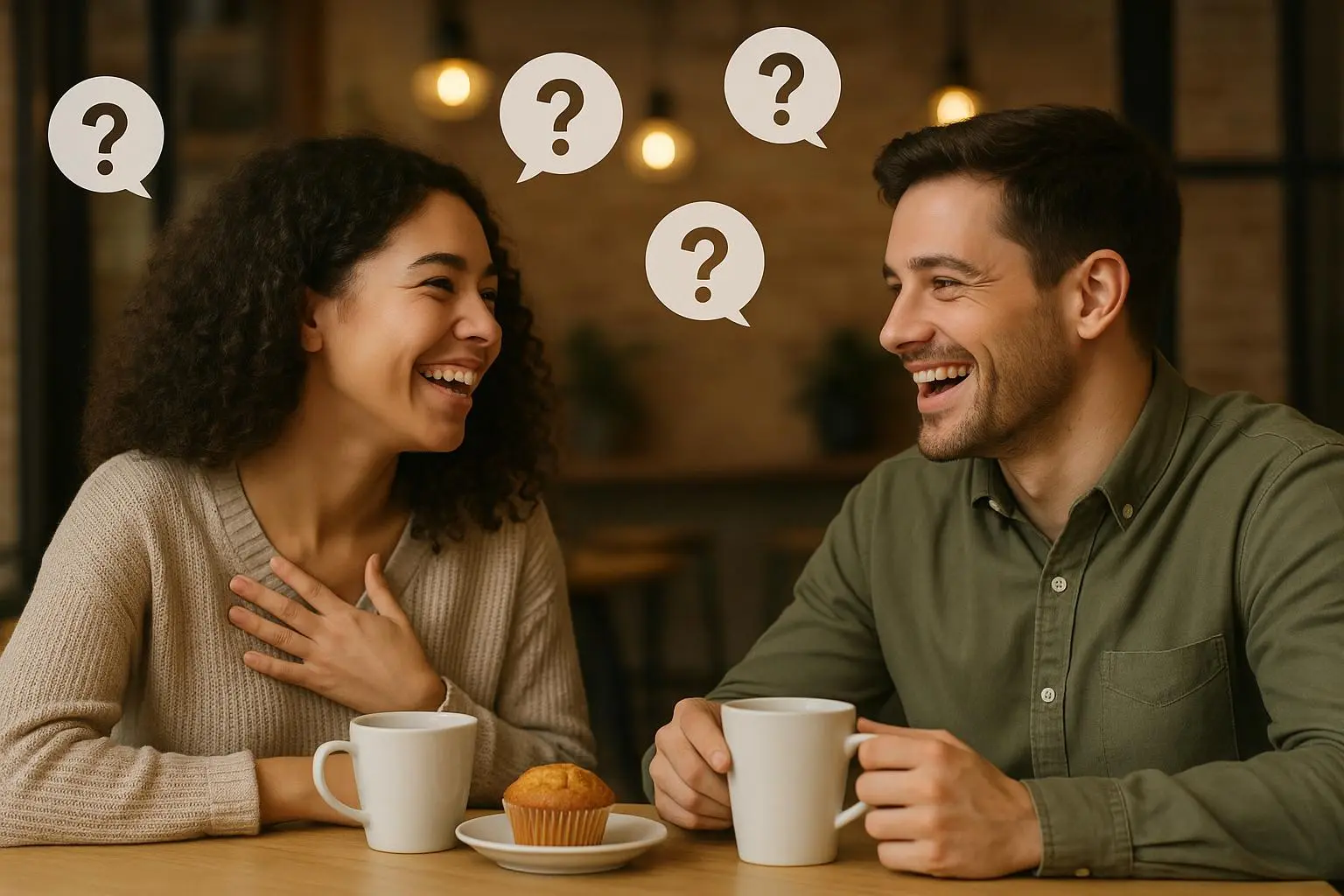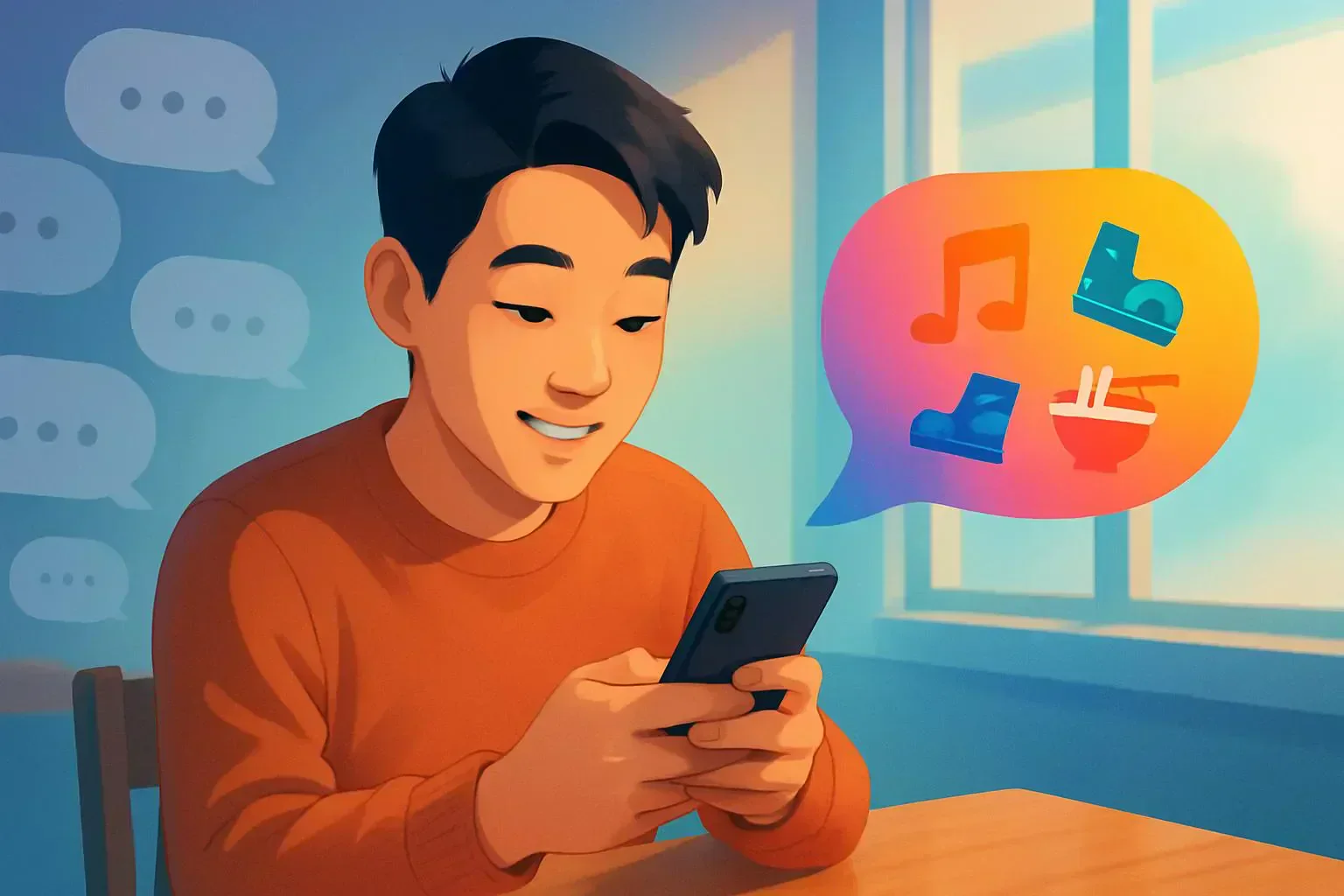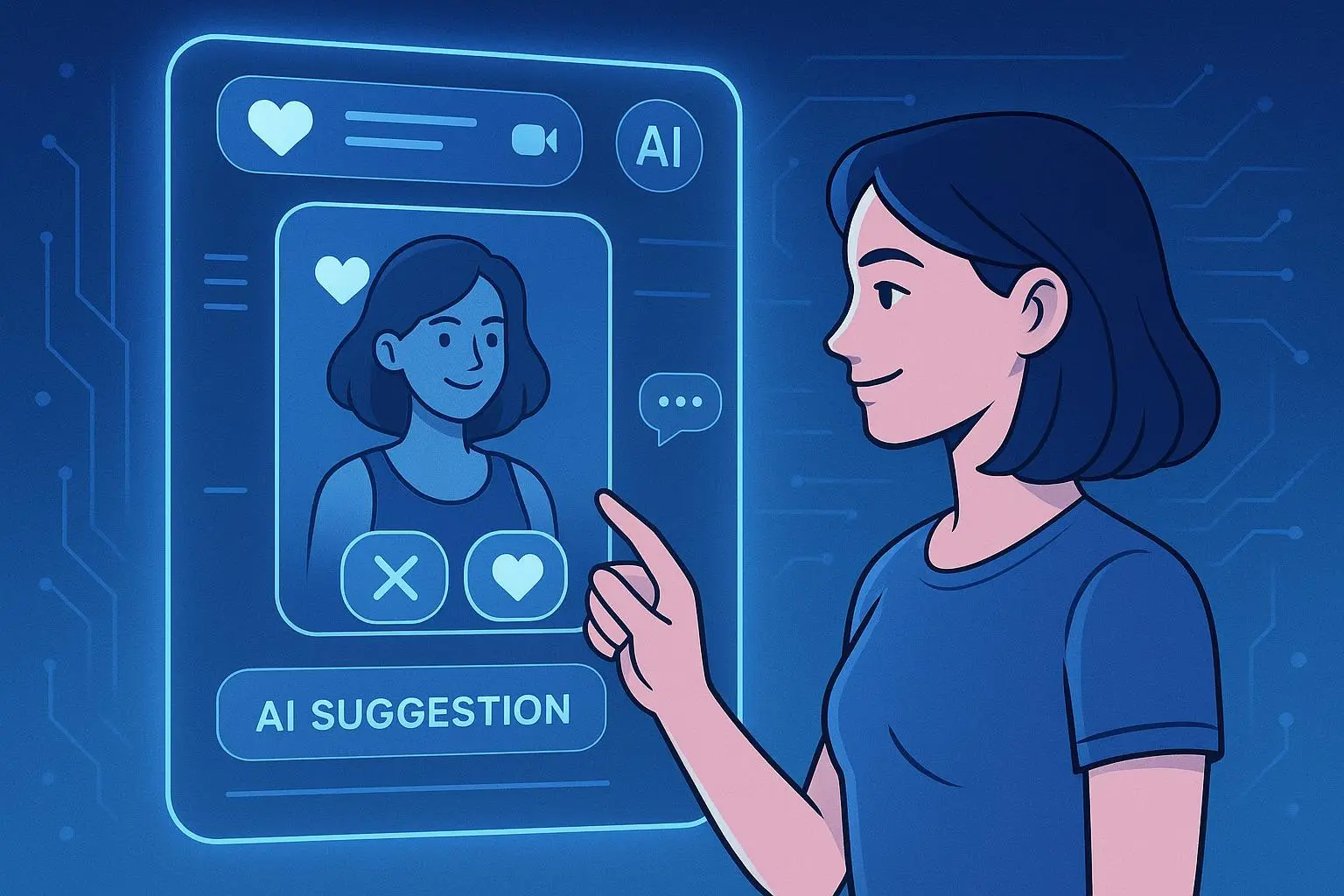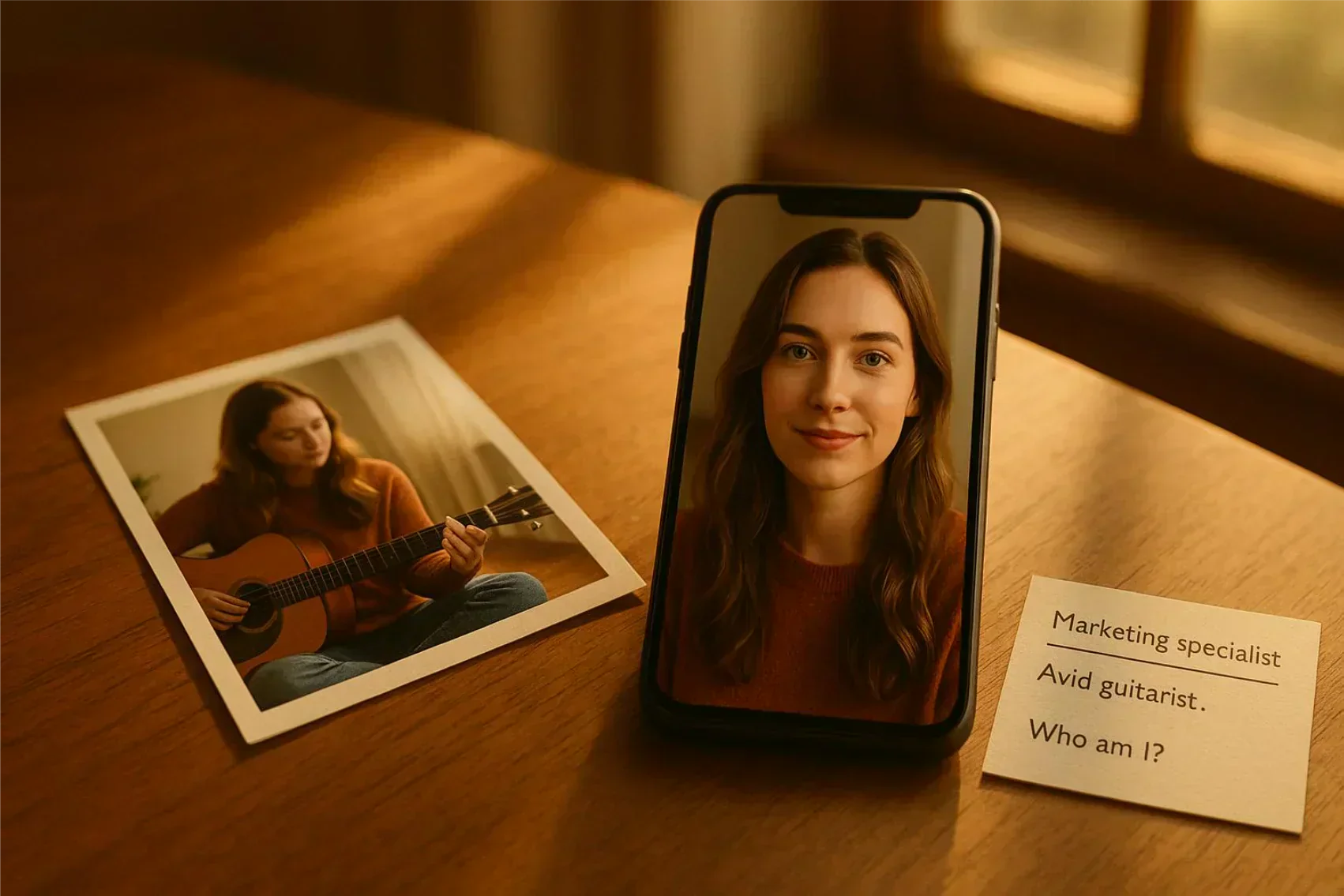
First-Date Conversations: Questions That Spark Connection
Published on 4/11/2025 • 6 min read
First dates can feel like walking a conversational tightrope. You want to be interesting but not performative, curious but not invasive, and confident without sounding rehearsed. Over the past five years I’d estimate I’ve been on roughly 60 first dates — and when I shifted from winging it to carrying a small toolkit of adaptable openers and follow-ups, my second-date rate climbed from about 30% to roughly 65%. Preparation doesn’t mean memorized lines. It means knowing which gentle prompts open doors and how to move the chat from small talk to something real.
Why conversation starters matter — and why they aren’t a script
Good conversation is part craft, part attention. A well-timed opener or a curious follow-up keeps momentum and shows you care about what the other person is saying. Use starters like stepping stones, not a checklist: ask a question to open a window, then walk through it together.
The goal of a first date isn’t to check off questions. It’s to find a rhythm where both people feel curious, comfortable, and seen.
Below you’ll find grouped prompts and practical micro-examples (exact phrasing and follow-ups) so you can try them in the moment. I’ll also share tips for edge cases — cultural differences, neurodivergent cues, and how to pivot when the energy shifts.
[Footnote signals here are for reference and should be checked against the sources listed in the References section.]
The opener: light ice-breakers to set a comfortable tone
Start here if you’re nervous or just getting warm. These questions are low-pressure and reveal personality in an easy way.
- What’s the best thing that happened to you this week?
- Working on anything exciting lately, outside of work?
- What’s a small thing that always makes you smile?
- Are you a morning person or a night owl?
- What’s the last song you had stuck in your head?
Why they work: everyone can answer quickly, and the specifics reveal subtle preferences. When someone mentions a small joy — a perfect coffee find, a great dog walk — you learn what they value.
Micro-example (exact phrasing + follow-up):
- You: “What’s a small thing that made you smile this week?”
- Them: “Found a tiny bakery with the best almond croissant.”
- You (follow-up): “Ooh — that sounds ideal. Where is it? Do you go alone or is it a ‘bring-a-friend’ kind of spot?”
That follow-up does three things: it asks for a concrete detail, surfaces a potential shared activity, and invites a short story.
Anecdote: I once started a date with a bakery detail and learned my date loves pastry hunts as a mini-adventure. We ended up planning a bakery crawl for the weekend. It wasn’t fancy, but the vibe shifted from cautious to curious in minutes.
The discovery phase: hobbies and passions
Once the opener lands, move toward what fuels them. People light up when they talk about what they love.
- What’s something you could talk about for hours?
- How do you like to spend your weekends to recharge?
- Is there a skill you’re currently trying to learn?
- What’s the last great book you read or show you binged?
- If you had a completely free day, how would you spend it?
Micro-example (exact phrasing + follow-up):
- You: “What’s something you could talk about for hours?”
- Them: “Urban gardening.”
- You (follow-up): “That’s cool — what’s your favorite plant to grow? Any funny early disasters?”
When they answer, ask one specific follow-up (don’t interrogate). Then add a 20–30 second anecdote from your life to keep the exchange mutual.
Micro-moment: I asked a question about a hobby, they lit up, and I shared a tiny moment from my own weekend—an awkward but endearing misstep that became a bonding beat.
Travel and adventure: stories that open up dreams
Travel talk invites visual storytelling and generally stays positive.
- What’s the most memorable trip you’ve taken?
- If you could hop on a plane tomorrow, where would you go?
- Are you more beach or mountain for a getaway?
- What’s a local spot you love that most people don’t know about?
- What place is at the top of your bucket list?
Pro tip: If they tell a travel mishap, mirror their tone — laugh with them when it’s funny, and show empathy when it was stressful. That builds trust and makes planning a future meet-up feel natural.
Career and ambitions — ask with curiosity, not judgment
Job titles are surface-level. Ask about meaning and rhythm.
- What’s the most interesting or unexpected part of your job?
- Did you always picture yourself doing this work?
- What’s a goal you’re working toward right now?
- If money weren’t a factor, what would you do?
- Who’s influenced your career the most?
Quick boundary tip: avoid salary specifics or performance critique on a first date. Those can feel invasive.
Deeper connections: when the vibe allows
These questions are for when the energy is warm and eye contact is steady.
- What’s something you’re really proud of?
- What’s a lesson that’s stuck with you?
- What quality do you value most in friends or partners?
- What are you really grateful for right now?
- What does a ‘perfect’ day look like for you?
Micro-example (exact phrasing + follow-up):
- You: “What’s a lesson that’s really stuck with you?”
- Them: “Don’t say yes before you think it through.”
- You (reflective follow-up): “That’s a great one. Has that changed how you pick commitments? I used to say yes to too much, and learning to pause helped me enjoy the things I actually chose.”
When someone shares something personal, validate rather than fix: a short reflective comment or a matching personal example is usually enough.
Fun and hypotheticals: playfulness keeps things light
A little silliness lowers stakes and creates memorable moments.
- If you could have any superpower, what would it be?
- What’s the weirdest food you’ve tried and liked?
- If you could have dinner with any three people, living or dead, who would you pick?
- What’s an unpopular opinion you secretly hold?
- What did you love doing as a kid?
Micro-example (exact phrasing + follow-up):
- You: “If you could have any superpower, what would it be and why?”
- Them: “Teleportation — saving travel time would be wild.”
- You (follow-up): “Same. Imagine skipping a commute and popping into a weekend escape. What would your ‘first teleport trip’ be?”
Playful hypotheticals give an easy route to planning — a dessert crawl, a museum visit — without heavy pressure.
Practical conversation skills that actually work
Questions are tools; delivery matters.
Be an active listener
- Don’t plan your next question while they speak. Let natural pauses linger for a beat — they often invite honesty.
Ask curious follow-ups
- When they mention a detail, follow it: “You said you love pottery — what’s your favorite piece?” One focused follow-up beats three shallow ones.
Share your own answers
- Mutual vulnerability keeps things balanced. If you ask about pride, offer one of your own in return.
Read the room and pivot
- If a topic falls flat, switch gently: “Totally fair — what show are you into lately?” Adapting beats doubling down.
Watch neurodivergent cues
- Some people prefer direct questions and shorter turn-taking. If reactions are delayed or brief, slow your pace and use clearer, closed-open chains (one short question followed by a slightly broader one).
Mind cultural differences
- Topics that are casual for you (like about family structure or dating history) might feel sensitive for someone from a different background. If you notice hesitation, offer a softer framing: “If you don’t mind me asking…”
Stay present
- Put your phone away. Undivided attention signals respect and builds safety.
Handling awkward silences — without panicking
Silences aren’t failures; they’re opportunities. Try a light observation about the place, a smile, or a simple prompt: “What were you thinking about just now?” Another tactic: toss in a playful hypothetical to reset the energy.
If you want a subtle tool to practice transitions, I sometimes use a conversation-mapping app to rehearse pacing and pivots; I’m not affiliated with any product, but it’s helpful for nervous folks who want structure.
Real examples from my dates — what worked and what didn’t
What worked:
- Opening with “What’s a small thing that made you smile this week?” led to an hour of swapping tiny happy moments (a silly dog story, a perfect pastry). We left planning a casual follow-up: “Want to check out that bakery next Saturday?” It felt natural because it referenced something they already cared about.
What didn’t:
- A clever time-travel hypothetical fell flat once. The person preferred practical talk, so I pivoted: “Okay, what’s your favorite way to spend a weekend?” The shift to a concrete topic salvaged the date.
Lesson: questions are flexible. Watch responses and be willing to change course.
Personal note: when I treat conversations as experiments rather than performances, I show up more genuinely. That mindset reduces anxiety and lets you notice cues you might otherwise miss.
How to end a date well — and set up what comes next
When a date winds down, be direct but kind. If you enjoyed it, say it plainly: “I had a really great time tonight.” If you want a second date, suggest something specific tied to the conversation: “You mentioned that bakery — want to go next Saturday?” Specific plans increase the chance of follow-through.
If you don’t feel chemistry, keep it simple: “Thanks for tonight — I enjoyed meeting you.” No need to overexplain.
Final thoughts: be curious, be kind, be yourself
The best conversationalists I know aren’t flashy — they listen, respond honestly, and show curiosity without judgment. Use these starters as a scaffold, not a script. Let them guide you into authentic moments rather than force a performance.
Be patient with yourself. First dates are practice in curiosity and courage. Each one teaches you more about what you want and how you connect. Bring your real self, ask thoughtful questions, and remember that the best conversations are the ones where both people walk away feeling seen.
Good luck — and enjoy the conversation.
References
Ready to Optimize Your Dating Profile?
Get the complete step-by-step guide with proven strategies, photo selection tips, and real examples that work.


